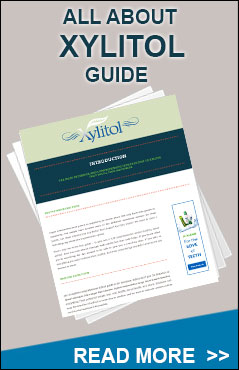 Ear infections, ADHD, autism and Special Ed?
Ear infections, ADHD, autism and Special Ed?
Jerome Klein, who like me goes by Jerry, coauthored the medical textbook on ear infections along with Charles Bluestone. In it they show how this link is created. It’s a connection I have known about for a long time because with each child in our program we talked about their past medical history, and early child ear infections and ventilation tubes were so common I couldn’t ignore them.
But most of the time I saw these kids a long time after their ear infections. It would have been nice to see them earlier; early interventions are always more successful, and maybe the problems could be prevented. Back then the medical profession didn’t seem to care; the infections were easy to treat with antibiotics, and they were common enough to almost be normal–like a right of passage. It’s only the later editions of their textbook that this connection is discussed.
What happens when a child gets an ear infection is that the body tries to wash it out, so fluid is released into the middle ear where these infections are in order to do that. Unfortunately the only opening to drain this infectious fluid is back down the canal that connects the middle ear with the back of the nose, which is how the germs got into the ear to begin with, and it is often swollen from the infection as well. So the pressure in the middle ear increases and the child gets the traditional ear ache.
This fluid, and where it is, is the problem. The middle ear, where these infections are, is also where the small bones are that carry the vibrations of the eardrum to the brain. They work well when they can move freely, but they can’t move nearly as well when there is fluid all around them. And if ear infections are common the fluid is there all the time and it gets thicker–the English call it glue ear. These were the kids I saw much later.
As a teacher I also know that there are windows of development that play a role as well. These are periods of time when a child’s brain is primed to learn something. People looking at the window for learning language tell us that it begins at about the sixth month of pregnancy and ends at about two years of age. If there is fluid in the middle ear during this window they are at risk.
These windows also prepare the child for the next learning task, but if a window is missed, as it is when fluid blocks the proper recognition of sounds and language, subsequent development is at risk. Autism, almost a current epidemic, is associated with a disorder in the facial recognition area of the brain. Facial recognition, along with sight itself, is one of the earliest developmental windows. Both center on the mother’s face.
How you can help.
Remedying developmental problems requires going back to the window, and that takes concerted effort and repetition if the window is closed. Prevention is much easier. If you are a new Mom try to spend at least five minutes several times a day face to face with your baby. Zebra’s imprint on their mother’s stripes; babies do it on mother’s faces. Doing this when you change their diaper or nurse them, or even hold their bottle, should be enough to help this part of their brain develop.
If it is the sound window that is of concern pay attention to your child and if they have had an ear infection watch to make sure they can hear you: call their name when you are behind them; see how they manage the volume on the TV (but if they are younger than two they should not be watching–the frequency of facial changes on TV can wear out this center), and; read to them often from their favorite book, but change the words and the story and see how long it takes them to call you on it.
Prevention really is the best way, and now we can prevent most ear infections from ever happening. The Finns chew a new kind of gum that prevents tooth decay because the xylitol in it makes the bacteria on our teeth less able to make the acids that begin the cavities. They also found that the gum prevented about 40% of ear infections. Dr. Lon Jones, an Osteopathic Family Physician in Texas, read about this and, realizing that the germs causing ear infections live in the nose, thought it may work better there. Ten kids in his practice with chronic ear infections were given a xylitol containing nasal spray to be used before every diaper change. At the end of a year their ear complaints decreased by 94%. He tells that story in his book, No More Allergies, Asthma, or Sinus Infections, which is available at Amazon if you want more information.
Related Articles
Nasal xylitol and asthma study
By Dr. Lon Jones I was beginning to look at asthmat 18 years ago, but was preempted when my hospital and clinic closed. Much of asthma is triggered by pollutants in the upper airway that the crippled primary defense of muco-ciliary clearance cannot handle. Now that we...
Indoor air pollution solutions
Breathing Easy Indoors By Jane Wooley. Think pollution is all about filthy air outdoors? You’d be wrong. In recent years, more and more scientific evidence has shown that it’s actually the air inside our homes and buildings that are the most seriously polluted....
What is Xylitol?
What is xylitol? Well it is pretty amazing, if we do say so ourselves. It is an alternative sweetener that has been popular in food products since the 1960s. On top of being a sweetener, it has shown to have a significant reduction in cavities when used...
Five Unexpected Benefits of Xylitol
Xylitol has a lot of benefits, but it’s most commonly known as a sugar substitute. Xylitol is usually made from corncobs or from trees like birch. It’s similar to sugar in sweetness but contains 40% fewer calories. Here are four unexpected things you might...
How Xylitol Can Help Fight Fall Allergies
Many of us suffer from allergies when the seasons change. So what are the differences between spring and fall allergies, and how can you help fight fall allergies this year? Which Allergies Occur in the Spring? The most common spring allergy is tree...
Dangers of Afrin Nasal Spray
Afrin is one of the most popular nasal sprays on the market. Afrin and other similar nasal sprays work by stimulating the receptors in the smooth muscle of the blood vessels of the nose. It causes these blood vessels to constrict, which reduces nasal...









I had horrible, chronic ear infections as small child. In fact I had my own file drawer for my records at the ENT. I could hardly hear a thing much of the time. Due to the repeated infections, I have permanent hearing loss. What my repeated ear infections gave me is laser focus. Because I had to work so hard to keep up with the rest of my classmates as I was missing so much auditory input, it lead me to be hyper aware of people’s facial expressions and body language as well as tuned my attention to my teachers. My teachers couldn’t figure out why I could sit still and focus so long. Because there was nothing to distract me from the task which was learning and I had to concentrate so hard to try and grasp what they were saying. So in some ways my constant ear infections were actually an asset – not that I would wish them on any child!! Going to try the xylitol spray on my husband who has started having chronic ear infections at the age of 65. Thank you all for your research and bringing the product to market.